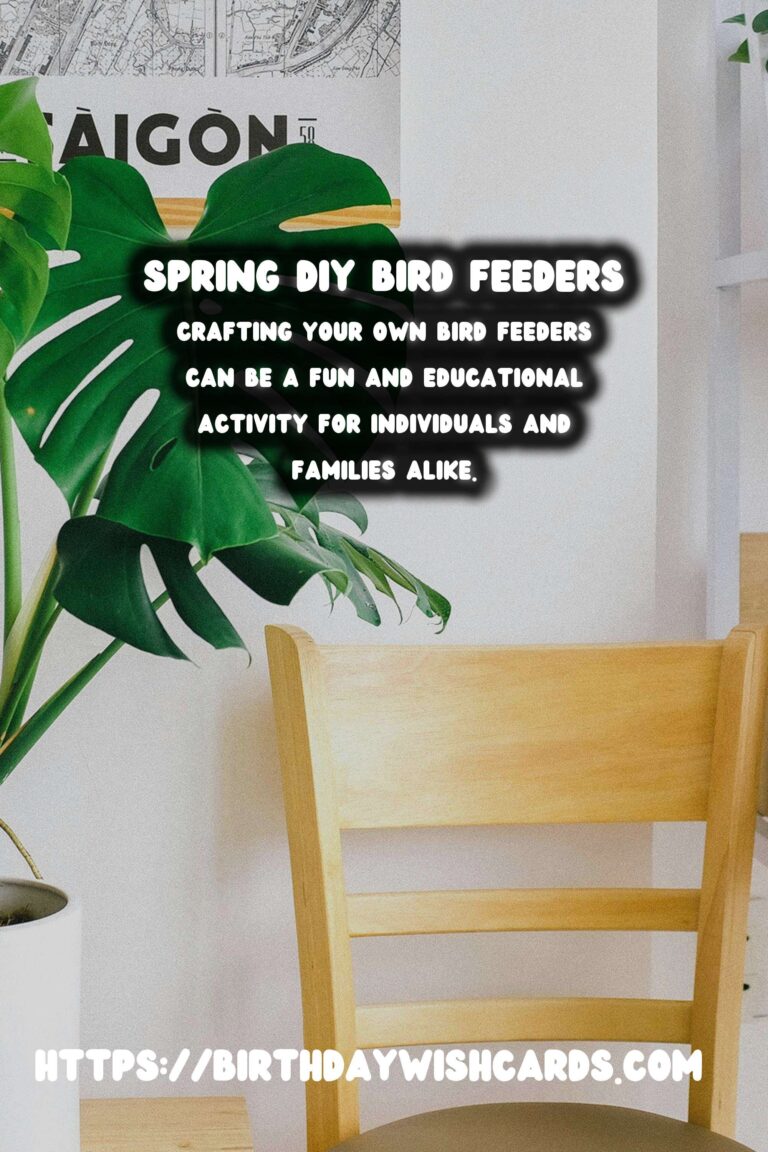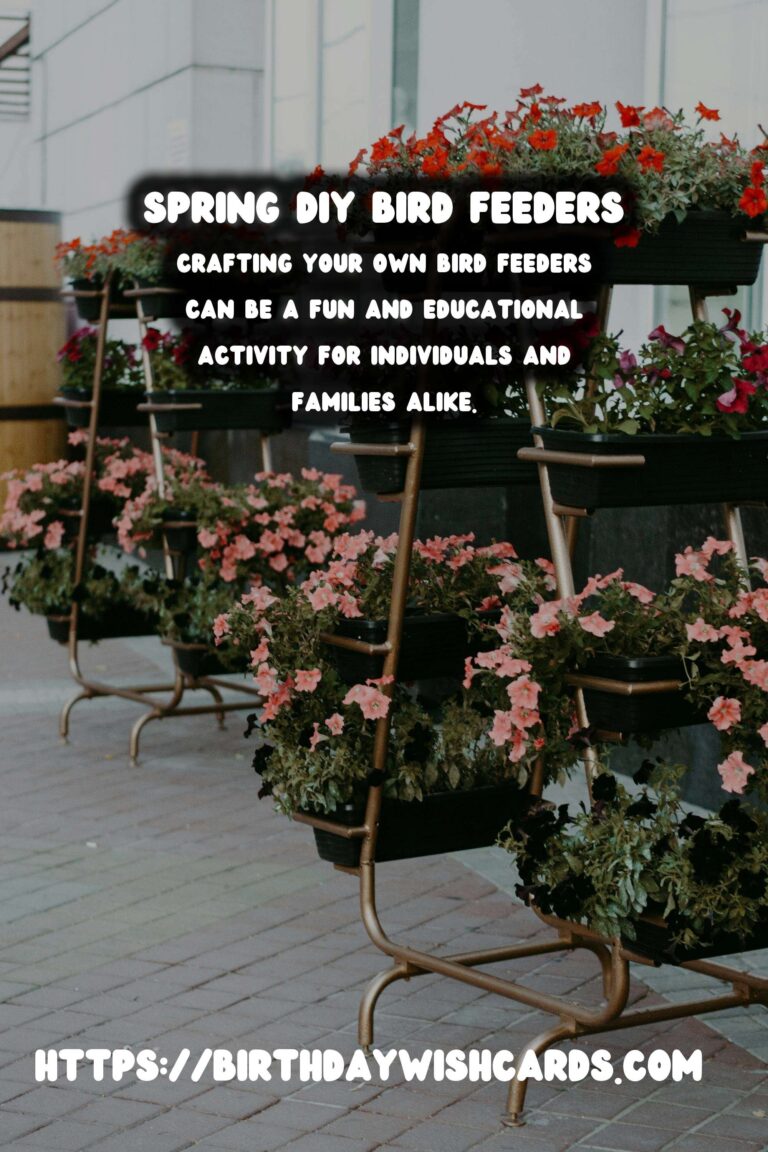
As the chill of winter melts away and the vibrant colors of spring emerge, many birds return from their migrations to seek food and shelter. Creating bird feeders is a rewarding way to welcome these feathered friends into your backyard. Not only does it provide essential nourishment for the birds, but it also offers bird enthusiasts a chance to observe a variety of species up close.
Benefits of DIY Bird Feeders
Crafting your own bird feeders can be a fun and educational activity for individuals and families alike. One of the primary benefits is the ability to repurpose materials, making it an eco-friendly option. Additionally, DIY projects can be customized to cater to the specific types of birds you wish to attract, ensuring that you provide the right kind of feed for different species.
Materials to Use for Bird Feeders
There are numerous materials that you can use to create bird feeders, many of which are likely already in your home. Some popular choices include:
- Plastic Bottles: Easily transformed into simple feeders by cutting openings and inserting perches.
- Pine Cones: Ideal for spreading peanut butter and rolling in birdseed.
- Milk Cartons: Cut and painted to create a colorful and functional feeder.
- Teacups: A charming way to offer seeds or nectar, especially for hummingbirds.
Step-by-Step Guide to Creating a Bottle Bird Feeder
One of the simplest bird feeders to make is a plastic bottle feeder. Here’s a step-by-step guide:
- Gather Materials: You will need a plastic bottle, scissors, twine or string, birdseed, and two wooden spoons.
- Prepare the Bottle: Rinse the bottle thoroughly and allow it to dry. Cut small holes on opposite sides of the bottle, just large enough to insert the wooden spoons.
- Create Perches: Insert the wooden spoons through the holes, ensuring they are level and secure. The spoons should act as perches, with the spoon heads catching falling seeds.
- Fill with Birdseed: Use a funnel to pour birdseed into the bottle, filling it just above the entry holes.
- Hang the Feeder: Tie the twine around the neck of the bottle and hang it from a tree branch or hook.
With your feeder in place, you’ll soon start to notice birds visiting your garden more frequently.
Maintaining Your Bird Feeder
Maintenance is key to ensuring that your bird feeder remains a safe and inviting place for birds. Regularly check your feeder for moldy or damp seed, as this can be harmful to birds. Clean the feeder with warm water and mild soap every few weeks to prevent disease transmission among birds.
Attracting Different Bird Species
Different bird species are attracted to different types of seed. For instance, sunflower seeds are popular among a wide range of birds, while nyjer seeds are particularly appealing to finches. By varying the types of seeds you offer, you can attract a diverse array of birds to your yard.
Conclusion
Spring is a wonderful time to connect with nature and enjoy the beauty of birdwatching. By creating easy DIY bird feeders, you not only support the wellbeing of local bird populations but also bring a lively and engaging element to your outdoor space. Whether you choose to make a simple bottle feeder or a more elaborate creation, the birds in your area will surely appreciate the effort.
Creating bird feeders is a rewarding way to welcome feathered friends into your backyard. Crafting your own bird feeders can be a fun and educational activity for individuals and families alike. There are numerous materials that you can use to create bird feeders, many of which are likely already in your home. One of the simplest bird feeders to make is a plastic bottle feeder. Maintenance is key to ensuring that your bird feeder remains a safe and inviting place for birds. By varying the types of seeds you offer, you can attract a diverse array of birds to your yard.
#SpringBirdFeeder #DIYProjects #BirdWatching #EcoFriendlyCrafts #WildlifeConservation

